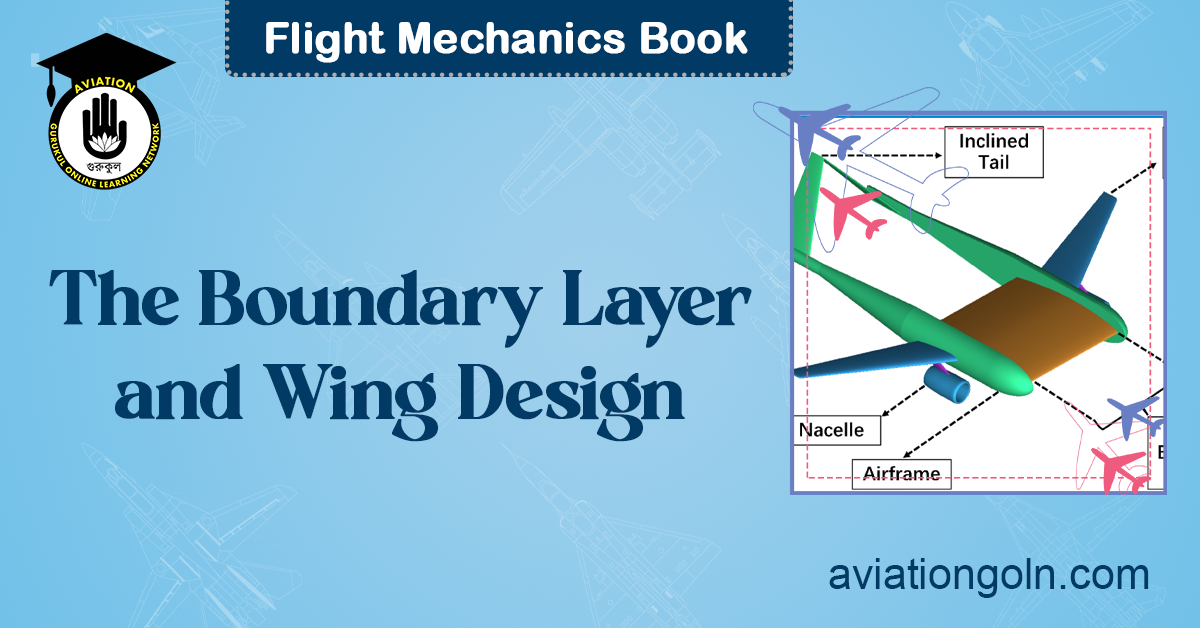The Boundary Layer and Wing Design: Aerodynamics is the study of how gases interact with moving bodies. As objects move through air, the layers of air near the object slow down due to viscosity. This phenomenon is referred to as the boundary layer. Understanding the behavior of the boundary layer is essential in wing design, as it can impact lift, drag, and the overall performance of an aircraft. This article delves deep into the intricacies of the boundary layer and its influence on wing design.
The Boundary Layer and Wing Design
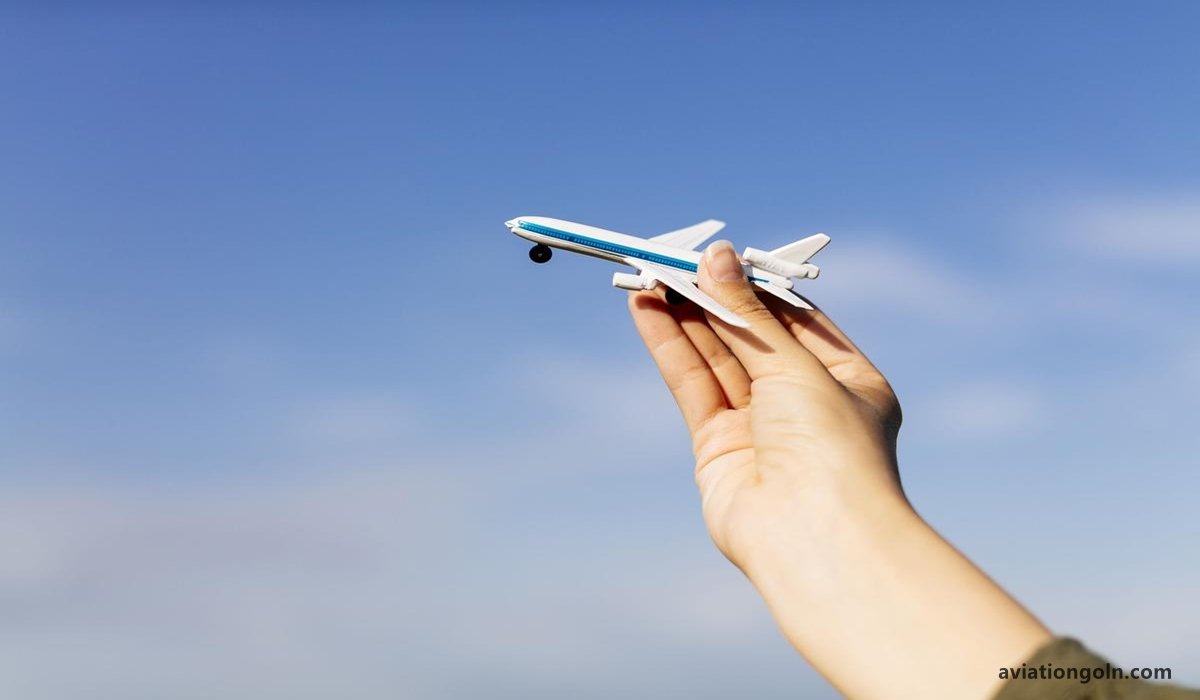
1. Understanding the Boundary Layer
The boundary layer is the thin layer of fluid that clings to the surface of an object moving through a fluid. In the realm of aviation, we’re mostly concerned with the layer of air next to the wing’s surface.
1.1 Types of Boundary Layer
- Laminar Boundary Layer: This is a smooth flow where the layers of air slide over one another without much interaction. It has low drag but is easily disrupted.
- Turbulent Boundary Layer: This is a chaotic, swirling flow that creates more friction (and therefore more drag) but is less prone to separation than the laminar flow.
The transition from laminar to turbulent boundary layers depends on factors like surface roughness, wing shape, and Reynolds number (a dimensionless number that describes the nature of flow).
1.2 Boundary Layer Separation
When the boundary layer begins to detach from the surface of the wing, it’s termed as separation. This phenomenon reduces lift and increases drag, making it a crucial factor in wing design.
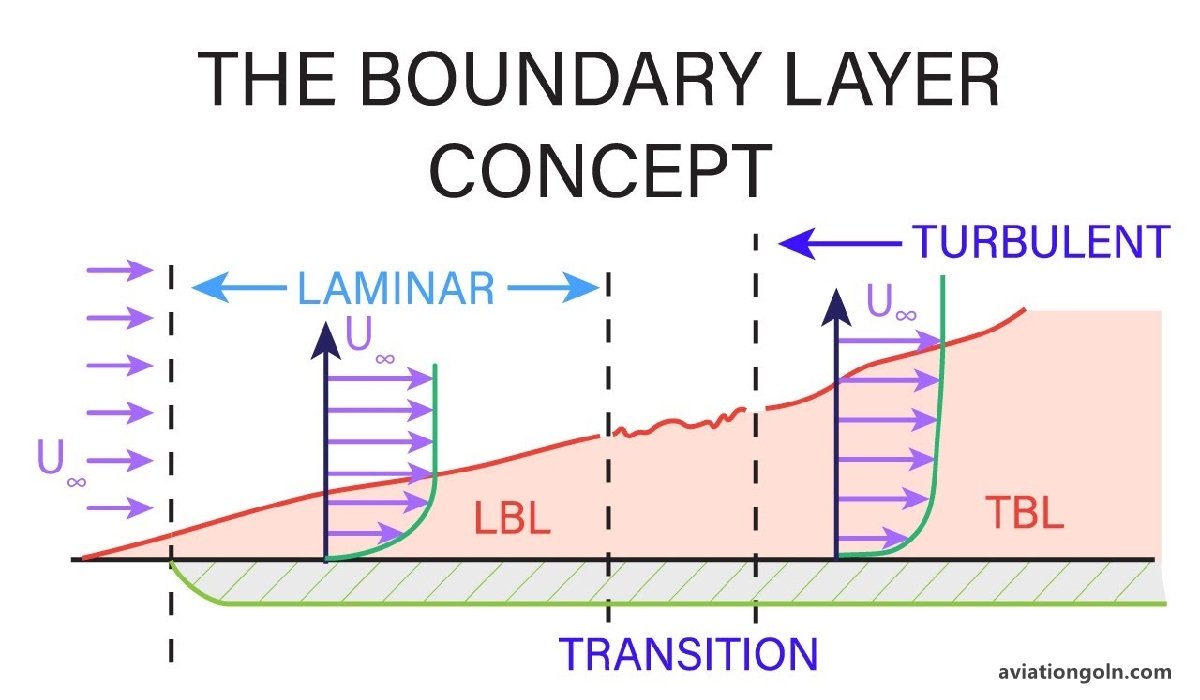
2. Boundary Layer’s Influence on Wing Design
Aircraft wings are meticulously designed to manage the boundary layer, maximize lift, minimize drag, and avoid premature boundary layer separation.
2.1 Airfoil Shapes and Boundary Layer
Different airfoil shapes influence how the boundary layer develops. Symmetrical airfoils, with both the top and bottom halves being mirror images, may not produce lift at a zero angle of attack. However, cambered airfoils, which have a curved shape, can generate lift even without an angle of attack.
2.2 Wing Sweep and Boundary Layer
Swept wings, commonly seen on jet aircraft, are angled backward or forward. A backward sweep helps in delaying boundary layer transition, aiding in maintaining laminar flow over a more significant portion of the wing at high speeds, reducing drag.
2.3 Winglets and Boundary Layer Control
Winglets, the vertical tips at the end of wings, can control the vortex generated at the wingtip, resulting in reduced drag and enhanced fuel efficiency. They work by manipulating the boundary layer’s behavior at the wingtip.
2.4 Use of Vortex Generators
These are small, fin-like structures placed on the upper surface of the wing. They produce mini vortices that energize the boundary layer, delaying or preventing its separation. This can improve control at high angles of attack.
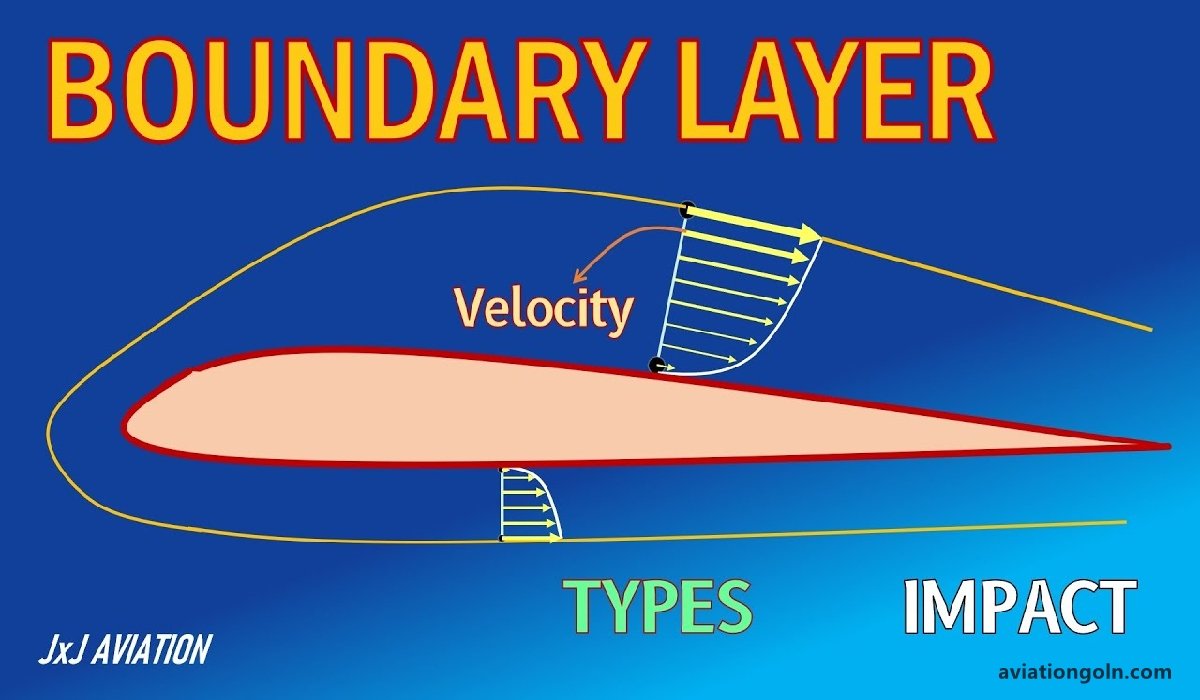
3. Advanced Techniques in Boundary Layer Control
3.1 Boundary Layer Suction
Here, tiny holes or slots are incorporated into the wing’s surface. Air is sucked through these holes, effectively thinning the boundary layer and delaying separation.
3.2 Boundary Layer Blowing
Contrary to suction, in this method, air is blown out of small holes or slots on the wing surface. This can energize the boundary layer and prevent it from separating.
3.3 Krueger Flaps and Slats
Both are leading-edge devices. While Krueger flaps extend downward to shape the boundary layer and delay separation, slats create a slot between themselves and the wing, allowing high-energy air to flow into the boundary layer.
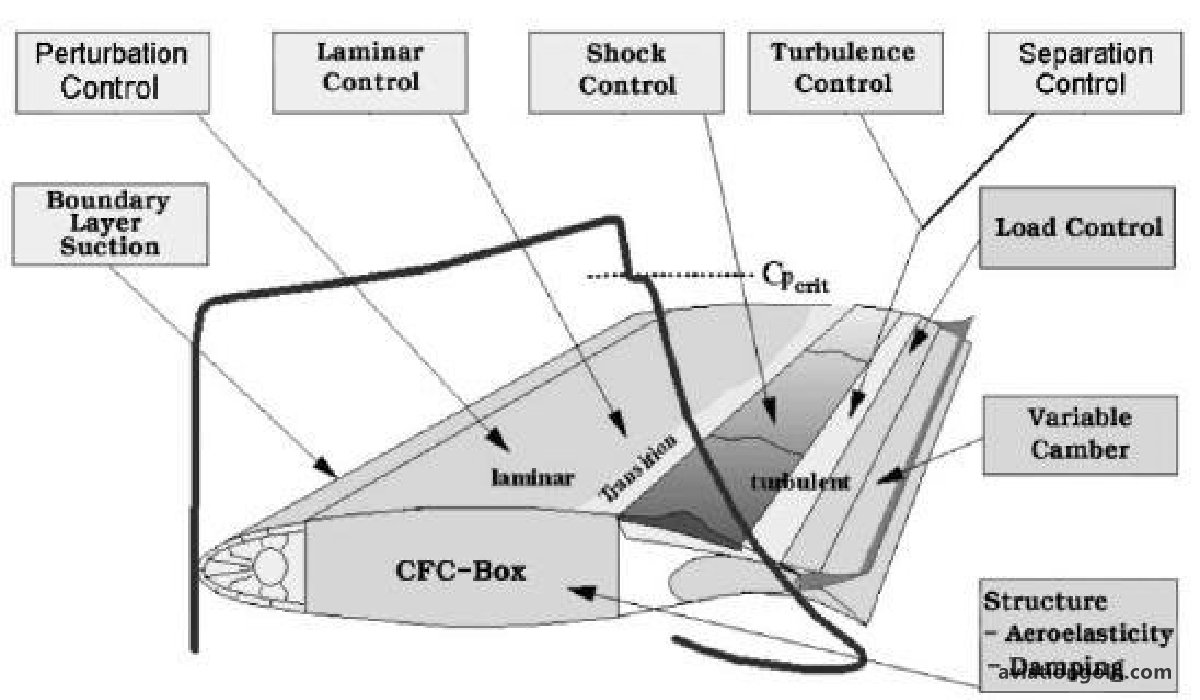
4. The Importance of Smooth Surfaces
Maintaining a smooth wing surface is crucial for preserving a laminar flow. Any form of surface contamination, such as ice, dirt, or even bugs, can transition the boundary layer from laminar to turbulent, increasing drag.

5. Implications for Aircraft Performance
5.1 Fuel Efficiency
A well-managed boundary layer means reduced drag, which can lead to lower fuel consumption. Over long flights, even minor improvements in boundary layer management can result in significant fuel savings.
5.2 Aircraft Speed and Altitude
The boundary layer behaves differently at various altitudes and speeds. High-altitude flight usually means thinner air and a tendency for laminar flow. High-speed flight, especially near the speed of sound, can lead to shock waves and boundary layer issues that designers need to consider.

5.3 Maneuverability
Boundary layer control can greatly influence an aircraft’s ability to maneuver, especially at high angles of attack. Control can be lost if the boundary layer separates prematurely.

The boundary layer, while often overlooked by those outside of aerospace design, plays a pivotal role in determining an aircraft’s performance. By understanding and manipulating the behavior of the boundary layer, aircraft designers can enhance efficiency, safety, and performance. As aviation technology continues to evolve, the mastery of the boundary layer will undoubtedly remain at the forefront of aerodynamic innovation.
See more:
